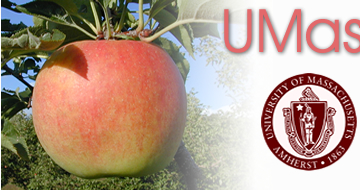

| FRUIT ADVISOR HOME | CONTACT | ABOUT | ||
 |
 |
|
| Consumer Evaluation of New, Antique, and Little Known Apple Varieties | ||
|
|
||
Each respondent was asked to indicate the variety or varieties that they normally purchase (Table 6). The varieties most mentioned were McIntosh, Macoun, Honeycrisp, Gala, Cortland, and Fuji, and these varieties accounted for more than two thirds of the total responses. Prominent among this list are the apples that grow very well in New England and achieve their highest potential in this region. In contrast to the apples usually purchased by survey participants is the list of the top 10 apple varieties produced in the United States (Table 7, data provided by US Apple Association). Macoun and Honeycrisp are not listed in the US production but over 25% of the participants list these as the apple that they normally purchase. McIntosh was a favorite of participants yet it only accounts for 4.3% of the national production. One of the most interesting contrasts is with the variety Delicious. More Delicious are produced in the US than any other variety, and it accounts for over 25% of total US production. In the list of customer purchases, Delicious is near the bottom with only 2.1% of the participants indicting that this is the variety that they normally purchase. It is also interesting to note that Hawkeye Delicious was selected as one of the varieties in the heirloom category to test, and it rated near or at the bottom of the varieties evaluated. Our interpretation of this result is that individuals who frequent farmers markets and purchase apples there represent a different group of consumers than those who purchase apples in grocery stores. | Table 6 | Table 7 | Table 8 | We asked individuals what taste preference they had for apples. A summary of individual preferences indicated that 48% preferred sweet/tart apples, 30 % preferred tart/sweet apples, 16% liked sweet apples, and just 6% preferred tart apples (Table 8.) These results are nearly identical to those published earlier by Bob Stebbins in Oregon and by us in an earlier study. A conclusion that we can draw from this observation is that the individuals who participated in this survey represent a good and accurate cross-section of the apple purchasing public. It also emphasizes that multiple apple varieties should be made available to the public since consumer tastes differ. |
||
| ©Copyright 2008 University of Massachusetts Amherst. Site policies. Produced and maintained by the UMass Fruit Program. |